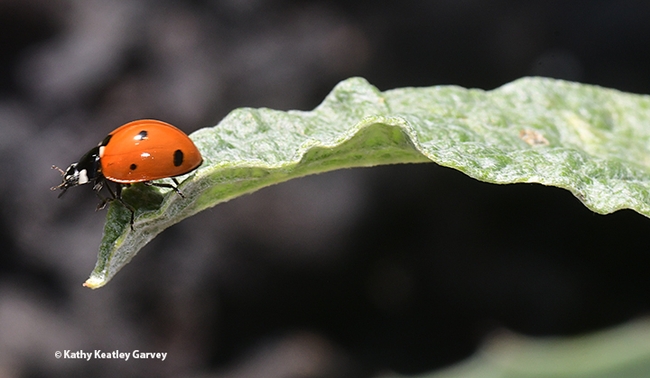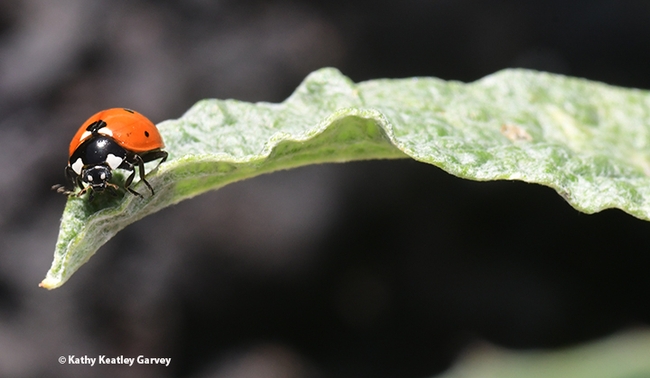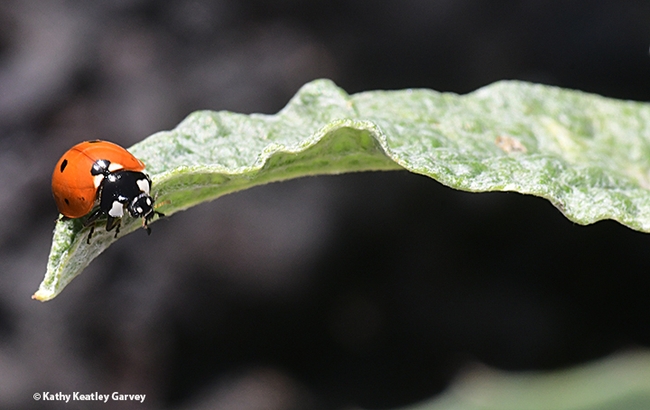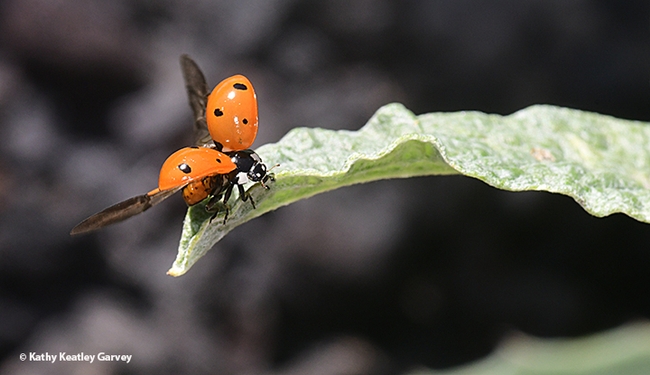Ladybug, ladybug fly away home
Your house is on fire and your children are gone
All except one, and her name is Ann
And she hid under the baking pan.
So says a traditional nursery rhyme traced back to 1744 when it appeared in Tommy Thumb's Pretty Songbook, according to Wikipedia. The first version has it as "Ladybird" instead of "Ladybug" and another version has it "Your house is on fire and your children will burn."
The nursery rhyme was meant to be a chant to shoo away the lady beetle (aka ladybug), according to freedictionarycom. It was "an allusion to the practice of farmers burning their fields after the harvest."
Nowadays, we're more interested in a ladybug's take-off and landings capabilities.
Have you ever tried to photograph the split second when a ladybug spreads its wings? It's not easy to do because insects are unpredictable, and you fingers and your camera shutter speed don't always cooperate, either. Beetle blur!
It's a marvelous feat, though.
Writer Joanna Klein said it best in her May 18, 2017 piece in the New York Times: "The ladybug is a tiny insect with hind wings four times its size. Like an origami master, it folds them up into a neat package, tucking them away within a slender sliver of space between its abdomen and the usually polka-dotted, harder wings that protect it. When it is time to take off, it deploys its flying apparatus from beneath its colorful shell-like top wings, called the elytra, in only a tenth of a second. And when it lands, it folds it back in just two. Switching between flying and crawling many times in a day, the ladybug travels vast distances." (See the news story and watch the video on how a ladybug tucks away its wings.)
Yes, the ladybug is an origami master.
Attached Images:

This lady beetle, aka ladybug, appears to ponder its next move. (Photo by Kathy Keatley Garvey)

Which way to go? Or to go at all? Decisions, decisions. (Photo by Kathy Keatley Garvey)

The ladybug decides to back up a bit. (Photo by Kathy Keatley Garvey)

Watch me go! A ladybug unfolds its wings and is ready for take-off. (Photo by Kathy Keatley Garvey)